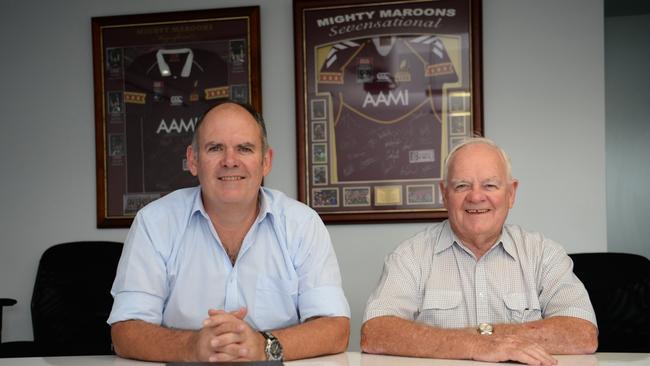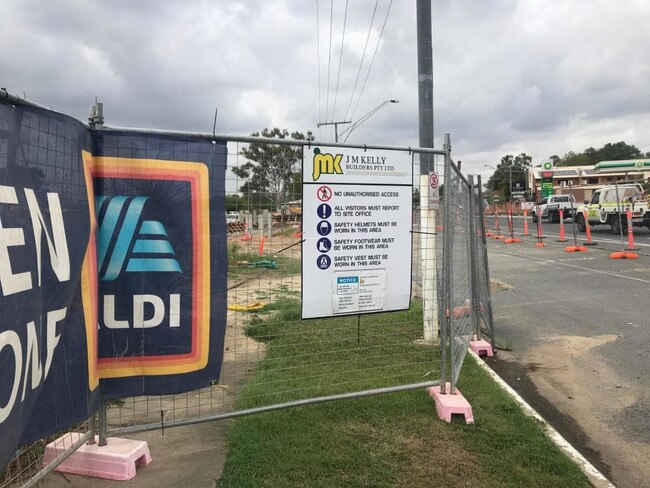How the Queensland Government kept rogue builder JM Kelly afloat
In 2016, the State Government transferred construction contracts it had with a failed builder to another within the same group of companies, only for it to collapse in 2018. The total debt owed to hundreds of mainly small Queensland businesses topped $50 million.
THE Queensland Government in 2016 transferred a series of construction contracts it had with one failed Rockhampton builder to another within the same group of companies only for it to also collapse two years later.
The liquidator for the second of the two companies was to subsequently find it to have become insolvent within six months of the transfers taking place.
$50 million J.M. Kelly collapse: What the Government knew before it all fell apart
The warning sign that nearly cost a Brisbane subbie his business
Police and ASIC had eyes on officials at failed builder JM Kelly
While they ensured the various projects were completed, the transfers failed to provide that the failed company’s creditors would be paid.
The liquidators of the other company found it traded insolvent for three years before its winding up in 2016.
The companies left debts totalling $14 million to hundreds of mainly small business construction subcontractors from Townsville to the Gold Coast.
Total debt topped $50 million.
The construction arms of the JM Kelly Group of Companies based at the same Rockhampton address were JM Kelly Project Builders and JM Kelly Builders.
They were operated via a central treasury function and funded by National Australia Bank finance via cross-collateralised loans for which ultimately all 10 companies in the group were responsible.
The JM Kelly Group had been run by Geoff Murphy for 57 years. His son John was the general manager of both Project Builders and JM Kelly Builders.
Geoff Murphy was excluded for three years by the Queensland Building and Construction Commission from being a person of influence in the building industry following the $31m collapse of Project Builders in 2016.
JM Kelly goes into administration
Explosive allegations about failed building company
Liquidation ‘gravely concerning’ for whole region
Despite being its general manager John Murphy successfully appealed a move by the building regulator to also exclude him, eventually securing a Queensland Civil and Administrative Tribunal judgment in his favour in the months ahead of the group of companies’ ultimate demise in October last year.
While that appeal was being heard the Department of Housing and Public Works on the advice of the QBCC refused to allow the group to tender for state government contracts.

However other state government departments continued to deal with the group as did Rockhampton City Council which engaged it for the Kershaw Gardens redevelopment.
The council justified its decision on the basis JM Kelly Builders had quoted nearly $1m less than the nearest other tender and was a local company.
A number of local businesses were ultimately to be left unpaid for work they carried out on the project.
WHY MORE BUILDERS WILL GO BROKE
The QBCC said building licensing laws which applied in 2016 permitted JM Kelly Project Builders, which changed its name to Collhart Investments just before its demise, to report to the QBCC on a stand-alone basis and not as part of a consolidated group.
“Financial information provided by the licensee to the QBCC showed the company was meeting requirements,” the regulator said.
“In the relevant audits undertaken by the QBCC, we identified the NAB finance facility and made enquiries to understand its valuation and operation in connection with this licensee.”
The contract transfers were ultimately overseen by the Department of Housing and Public Works.
A spokesperson said it acted in accordance within the law.
“The deed of novation in 2016 transferred the obligations of contracts from JM Kelly Project Builder to JM Kelly Builders,” they said.
“Under the law at the time, they were considered to be separate entities, registered and licenced and meeting PQC and QBCC requirements.
“The novation included actions under the Subcontractors’ Charges Act 1974 (Qld) to ensure subcontractors retained their rights.”
Subcontract unsecured creditors Peter Wrafter of TJ Wrafter and Son in Brisbane, Dave Willoughby of Ali Glass and Stainless in Bundaberg and Wayne Harris of John Goss Projects claim that after liquidation John Murphy and his construction manager continued to promise they would be paid for work done for JM Kelly Project Builders.
All have emails to support those allegations.
John Murphy declined to answer questions about why those ultimately unfulfilled promises were made and from where it was planned to draw the money to meet them.
Geoff Murphy in a written response blamed everyone from subcontractors to the QBCC, a developer who won a protracted court case against him, the State Government’s Building Asset Services and Housing Minister Mick de Brenni for his companies’ demise.
Mr Murphy’s response also named some subcontractors he said were attempting to claim money to which he said they weren’t entitled.

And he took issue with JM Kelly Group liquidator, PwC’s, assessment that JM Kelly Builders had traded insolvent since January 2017, saying it had “made no proper effort to ascertain the true facts”.
In relation to the solvency of JM Kelly Project Builders Mr Murphy said “I beg to differ that FTI asserted that Project Builders was insolvent from June 2013. FTI stated that the company’s primary source of assets was loans and receivables which if recovered then FTI considered the company to be solvent”.
In fact in a report to creditors FTI stated “Whilst my position remains the company was insolvent as of 30 June 2013, taking into consideration of the defences available to the director, the costs involved in prosecuting such claims and the possibility of having to defend against retaliatory counter claims, I do not consider it to be ultimately commercial to pursue the director for failure to prevent the company from trading whilst insolvent”.

The FTI report to creditors dated March 2017, identified 217 subcontractors were owed $2.8m and that the JM Kelly Project Builders and the JM Kelly Group were insolvent from June 2013.
The PwC report to creditors dated November 13, 2018 found a further 300 unsecured, principally mainly subcontractors, were owed a further $11m. It put the point of insolvency at January 2017.


